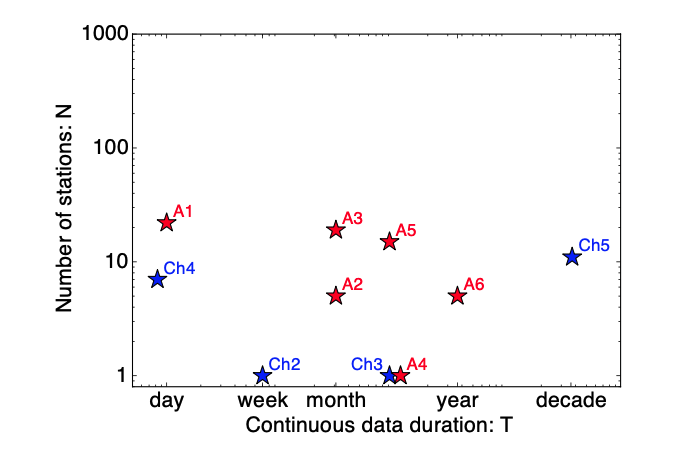0.1 Introduction¶
FAST is available to the public at https://github.com/stanford-futuredata/FAST as open-source software, and it will be released with a comprehensive user manual containing guidance for setting parameters. Interested users can run FAST to perform an uninformed search for earthquakes with similar waveforms on any seismic network, with varying duration of continuous data and number of stations. The FAST software has successfully detected earthquakes in the following data sets. FAST will only reach its full potential as a tool for seismological discovery if other users apply it to their own data sets (filling the N and T gaps in Figure 1) and improve the detection algorithms. Thank you to all collaborators and interested users who shared data, which was useful for testing the FAST software and identifying bug fixes, in preparation for its public release.
